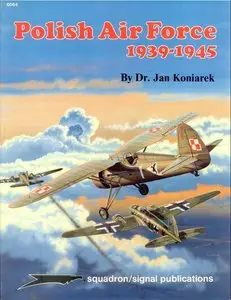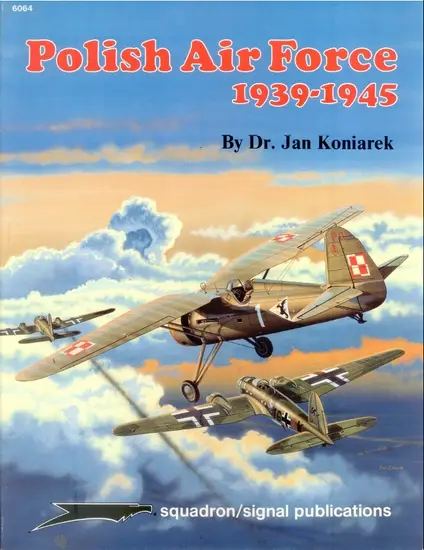The Polish Air Force 1939-1945 (Squadron 6064) By Jan Koniarek
Publisher: Squadron/Signal Publications 1994 | 64 Pages | ISBN: 0897473248 | PDF | 32 MB
Publisher: Squadron/Signal Publications 1994 | 64 Pages | ISBN: 0897473248 | PDF | 32 MB
During the September 1939 Campaign, Polish military aircraft were painted Olive-Brown on the uppersurfaces, with light Blue-Gray under-surfaces. Some Lublin R-XIII observation aircraft had a multi-color camouflage scheme, and Lublin R-XIII float planes of the Naval Aviation Wing were doped in an overall Silver-Gray. A distinguishing feature of front line aircraft was the asymmetrically placed chessboard national insignia on the wing uppersurfaces (the chessboard identifying Polish military aircraft is a simple White and Red design that can. however, be painted in two ways. Normally, the Red squares are in the upper left and lower right quadrants when looking at the insignia, but sometimes this scheme was applied with the colors reversed. There are also variations in the thickness of the borders and other details). This asymmetrical arrangement was adopted in 1932 to prevent the insignia from being used as an aim point. This asymmetry was less noticeable on the small P.7a and P.l 1 fighters, but it was very pronounced on larger aircraft, especially on the P.37 Los bombers. The undersurfaces of the wings carried large chessboards, but on most fighters and P.23 Karas reconnaissance bombers, the insignia had only the Red squares painted with the rest of the insignia outlined in Red — White was not used. On many aircraft the wing undersurfaces carried a Black letter on one wing, identifying the aircraft's air regiment, and a number on the other wing. Other characteristic markings included large and colorful squadron insignias which were painted on the fuselage. During the September 1939 Campaign these were often painted over. In some cases the wing chessboards were also painted over or scratched off to make the aircraft less conspicuous from above. After Poland's defeat the Polish Air Force (PAF) began to reform in France in the Autumn of 1939 with personnel that escaped from Poland. This force was equipped with French aircraft. These had standard Armee de 1"Air markings, except that on the fuselage sides the French roundel was replaced by the Polish chessboard.



